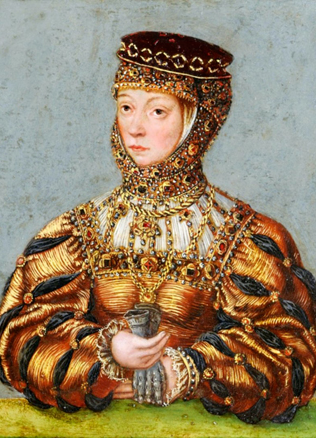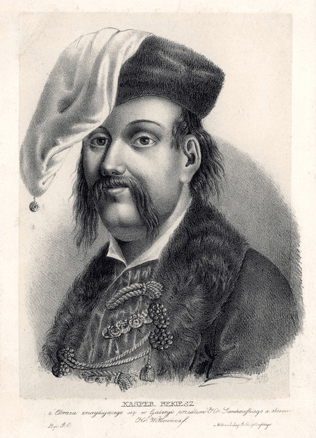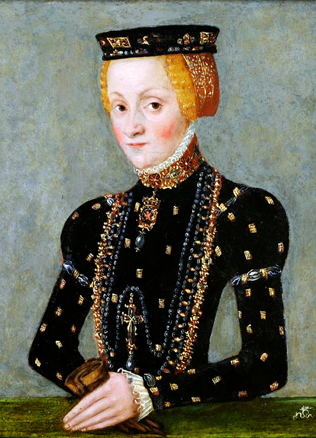Oligarchs Kęsgailos (Kieżgajło), or how Samogitia nearly became Kražiai County
Do You Know?
In medieval Europe kings often assigned in parts their increased holdings to be taken charge of by their deputies – counts. With the passing of time, the deputies accumulated ever greater power in their hands, made it inherited, and they themselves nearly liberated themselves from their subordination to the King. Such appropriation of the Ruler’s power was not characteristic of Lithuania, with the exception of one case, which was almost a success.
Power pinched from under the King’s very nose
In 1524, Grand Duke of Lithuania Sigismund gave a large rural district of Šiauliai with small towns, villages and the gentry that belonged to the land of Samogitia to be ruled by his illegitimate son, Bishop of Vilnius Duke Jonas. When the Ruler’s officials went to Šiauliai to give over the holdings to the deputies of the Bishop, they were met by the people of the Elder of Samogitia and were not allowed to enter the rural district. The Ruler had to remind the noblemen and the Elder of Samogitia in several letters that they had to obey the Ruler. The letter to Elder Stanislovas Kęsgaila ran as follows: “His Grace the Ruler ordered to tell you the following: Our Grace is greatly surprised that you, having this great favour from Our ancestors and from Us, value it so little and use the words that you are not supposed to use through the missions and in your letters, and go against Our will and orders. We, the Ruler, profoundly regret such [behaviour] of yours, counsellor of Our [Council]. However, We, the Ruler, being very patient, remind you once again and order you to give that Šiauliai rural district with everything in it, according to Our earlier order and letter, over to Bishop of Vilnius Duke Jonas in the presence of Our envoy. And that should be done exactly as said. In case, disregarding this you will resist Our will and orders, be sure that we shall no longer put up with such [behaviour of yours] and will treat you as Our disobedient subordinate.”
Kęsgaila’s impudent behaviour in the presence of the Ruler was not accidental, and the Kęsgailos’ power in Samogitia was deeply rooted.
Until 1409, there were no permanent authorities of the Lithuanian Ruler in that region. Only after the officials of the Teutonic Order, which were established there, had been driven away in the above-mentioned year, Samogitia was begun to be rapidly integrated in the Grand Duchy of Lithuania. The annexation of the region took place together with the baptism of its residents (the nobility was baptised in 1413, the local diocese was founded in 1417), regulation of their rights (granting the region privilege of Samogitia in 1441, 1442), building of the Ruler’s castles and the creation of the administration subordinate to the Grand Duke.
Taming of the obstinate Samogitians
The first deputies of the Ruler in Samogitia were Rumbaudas Valmantaitis who drove away the Germans from the country on the order of Grand Duke Vytautas, and later his brother Kęsgaila (christened Mykolas) took over these duties. Appointing the Valmantaičiai to rule the land that was scarcely subordinate to Lithuania has to be accounted for by the relations of this family with Samogitia. The “nest” of the Valmantaičiai family was Deltuva, near Ukmergė, however, their mother was a Samogitian, most probably a daughter of the noblemen of the land of Kražiai Mazginas (or Mažginas). Therefore, neither the appointment of the Valmantaičiai deputies of Samogitia nor Kęsgaila’s establishment in Kražiai was accidental. Despite the family relations, which enabled them to get on better with the local nobility, Kęsgaila’s acting as a deputy was not easy. He experienced attempts of the Samogitians to step back from the authority of the Lithuanian Ruler (1418) and to get rid of him as the highest official of the Grand Duke of Lithuania (1432, 1440). However, Kęsgaila once supported the candidature of Casimir Jagiellon to the throne of Lithuania, which ensured hi the support of the Ruler in the future. In 1441, the young ruler Casimir decided better to grant the rights of self-government to the Samogitian communities, which guaranteed privileges rather than to recall Kęsgaila from the office of the Elder of Samogitia. This, however, did not improve Kęsgaila’s relations with the Samogitians: it seems that Kęsgaila governed the eldership till his death (1449) through his protégé rather than directly. Kęsgaila’s second failure was that he managed, with the Ruler’s support, to pass governing of Samogitian eldership on to his son Jonas Kęsgailaitis, and the latter turned the authority of the family into a political tradition, which guaranteed office of the Elder for two more generations of the Kęsgailos (until 1532). How did that happen?
The real master of Samogitia was Jonas Kęsgailaitis. He became Elder around 1450 and governed until 1486. Though it is not clear whether he was appointed Elder by the Ruler or elected by the local noblemen because the latter from 1441 had this right but it is clear that during the period of his governance he actively cooperated with the most influential Samogitian families, rallied them around himself. In the future this guaranteed him “votes” of the electors. The Samogitians elected Kęsgailaitis’ grandson Stanislovas as their Elder.
The holdings appropriated in a silent way
The scheme of Jonas Kęsgailaitis getting established in Samogitia is not complicated. Taking advantage of the fact that the Ruler most often resided in Poland, and his lands in Samogitia were not everywhere clearly separated from the abundant and most often independent holdings of the farmers, Kęsgaila appropriated either “nobody’s” lands (especially on the north-western border of Samogitia) or the tributes and obligations of “nobody’s” peasants. A silent approval of the local noblemen and expansion of Kęsgailaitis household were needed to carry out this policy. The first condition was implemented by giving “a piece” to the noblemen, the second one – by acquiring holdings in legal ways whose boundaries were difficult to control. Kęsgailaitis’ largest holdings were accumulated around Kražiai and Plateliai castles. The first one also played a representation function. Meetings of Kęsgailaitis with the Samogitian noblemen and courts were held there. Expanded holdings in the environs of Gargždai, Kretinga and Palanga, as well as woods and hunting grounds to the north, towards the border with Livonia, were administered from the castle on the Island of Plateliai Lake.
Jonas Kęsgailaitšis’ son Stanislovas expanded his father’s “conquests” even more and at the beginning of the 16th century was perhaps the wealthiest nobleman of the Grand Duchy of Lithuania.
Alongside wealth only about 1/3 of which was in Samogitia (the remaining part was all over the Grand Duchy of Lithuania) he cherished great ambitions: maintained independent relations with the Teutonic Order, appointed his people (tivuns) to govern rural localities (tijūnijas), which his father gave to the Samogitian noblemen, interfered in governing the Samogitian parishes, impudently called himself “We, by God’s grace…. Elder of Samogitia” in some letters thereby as though allowing others to doubt that the Ruler’s appointment or the election of the nobility affect his position.
Firmly rooted
The Ruler noticed Stanislovas Kęsgaila’s actions. As soon as he became Grand Duke Sigismund the Old (1506–1548) started exerting pressure on Kęsgaila. At the beginning he distributed the lands of Samogitia to the noblemen, and during the 1522 Sejm, most probably, encouraged the tivuns of Samogitia to publicly complain to the Ruler that Kęsgaila abused his power and derogating from the privileges took them away from the tivuns, gave them over to his servitors.
Despite public checking of the rights and recognition that Kęsgaila abused his power, no great changes took place.
The Ruler separated his holdings from those of the Elder more clearly but after the death of Stanislovas Kęsgaila, at the request of the Samogitian noblemen, confirmed his son Stanislovas’ appointment the new Elder all the same. It was an unexpected death of the last “Samogitian” descendant of the Kęsgaila branch in 1532 that terminated the hegemony of that family in Samogitia.
Do You Know?
The Kęsgailos’ governance in Samogitia later had responses. In 1544, the Samogitians elected Stanislovas Mikalojaitis Kęsgaila, a representative of another branch of the Kęsgailos family, Elder. The Ruler did not confirm his election allowing the Samogitians to understand that he did not want the Kęsgailos’ power to come back to life again. Having received no office Kęsgaila somewhat “took revenge” when he obtained for himself after much trouble the title of the Count of Kražiai from the Holy Roman Emperor at the end of the rule of Sigismund the Old (1547).
Eugenijus Saviščevas



